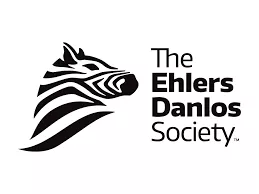
Abstract
Hypermobile Ehlers-Danlos syndrome (hEDS) is characterized by generalized joint hypermobility, musculoskeletal pain, and other systemic manifestations without a known molecular basis. Therefore, its recognition remains an exclusion diagnosis based on a new set of strict clinical criteria. Patients with symptomatic joint hypermobility who did not fulfill these new diagnostic criteria are currently classified as hypermobility spectrum disorders (HSD).
The present proposal aims to unravel, by integrated molecular, biochemical/physical, and nanoscience approaches, bioactive key molecules, and pathophysiological mechanisms associated with these conditions. We previously demonstrated that hEDS and HSD cells shared a pro-inflammatory matrix-degrading phenotype with a range of cellular features that are typical of myofibroblasts. Cellular proteome profiling of hEDS myofibroblasts revealed changes in the expression of a subset of proteins mainly implicated in cellular metabolism, redox balance, extracellular matrix (ECM) homeostasis, cytoskeleton organization, protein folding into the endoplasmic reticulum, intracellular trafficking, and secretory pathway. Proteome analysis of hEDS cells-derived culture media (CM) discovered altered levels of several ECM structural components (including collagens, fibronectin, and proteoglycans), matrix metalloproteinases and their inhibitors, and further secreted proteins predicted to be located in extracellular vesicles (EVs), which likely contribute to the excessive ECM degradation and concomitant acquisition of the peculiar myofibroblast-like phenotype. Furthermore, preliminary data obtained treating control fibroblasts with patient cells’ CM-derived soluble factors and EVs suggested that both these fractions may act synergistically to induce the disease phenotype.
In the present project, we plan to corroborate and deepen our previous proteome and secretome findings through targeted in vitro functional studies on interesting, emerged biomolecules both in hEDS and HSD myofibroblasts, to decipher mechanisms of action and functional significance within specific disease pathways to support their diagnostic application and possible future use as therapeutic targets. We also project to dissect the secretome composition of hEDS and HSD myofibroblasts, by fractioning it into soluble macromolecular components (MCs) and different sized-EVs, to uncover specific RNA species (including miRNAs), secreted bioactive mediators, and associated disease pathways that may contribute to the hEDS and HSD pathomechanisms.
This research, followed by targeted in vivo translational studies on patients’ serum/plasma, should contribute to the elucidation of the etiopathogenesis of hEDS and HSD, offer the possibility to identify potential biomarkers defining whether these disorders are part of a phenotypic spectrum rather than distinct clinical entities and, ultimately, pave the way to the development of targeted therapeutic strategies with a potential benefit for patients’ management. Considering the huge number of hEDS and HSD patients, the project could have a large social and economic impact. Indeed, reaching a definite and certain diagnosis will stop the expensive and lengthy diagnostic process and the development of targeted therapies will decrease the prescription of ineffective drugs and unnecessary evaluations, improve patients’ quality of life, and alleviate their disabilities.
Finanziamento assegnato ad UniBS: € 168.265,19

